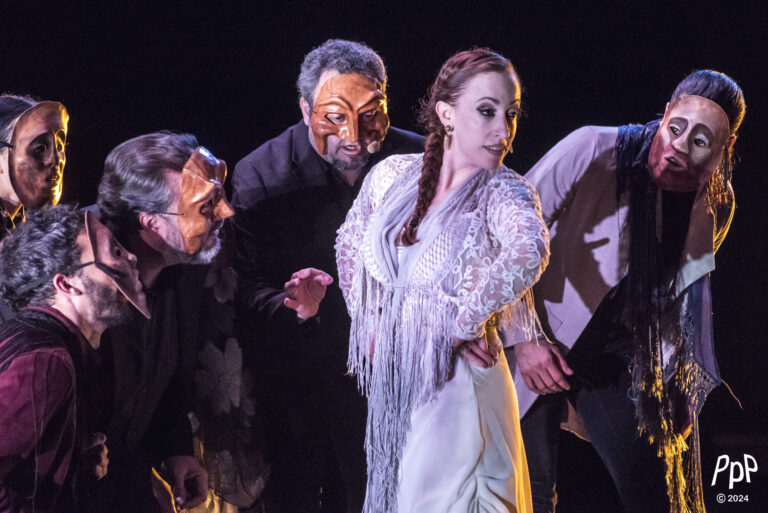Last night at Théâtre Maisonneuve, Place des Arts, was the Canadian premiere of Searching for Goya, an existential choreography based on classical flamenco, above all, but also modern dance and a little ballet. Productions Nuits d’Afrique did us a favor (a rose in our hair, no doubt!) by inviting New York company Soledad Barrio and Noche flamenca to present their show in Montreal, shortly after the premiere in Seattle a few weeks ago.



Photo credit: Peter Graham
Searching for Goya is inspired, you guessed it, by the art of Francisco de Goya (1746-1828), the great Spanish painter who revolutionized painting in his day and remains one of the greatest visual artists of all time. Even today, his visceral, sometimes explosive art, his message and his style remain totally modern and visionary, without having aged a single day.
That said, if you’re not a Goya specialist, you’ll have to look for Goya in the choreography, as the title suggests. The presence of the painter and his work remains in the background, like a ghost, a presence sublimated rather than exposed, although some passages are more obvious. But in the end, this detail is not decisive, because the irrepressible emotional force that emanates from the stage work of dancer Soledad Barrio and director Martin Santangelo overwhelms the spectator. We are caught up in a flamenco that is both rooted in tradition and in an expansive vision in which modern dance and symbolism come together holistically.
The set is almost bare, with few props apart from a few chairs and simple costumes, embellished by a few rare additions, such as the wings (of angels?) seen at the beginning and very end of the piece. There is no projection of paintings or engravings by Goya. This is not a pop show of the kind currently in vogue. We are elsewhere. In the unspoken, in the allusion, in a depth that demands concentration on the part of the spectator.


Modo de volar (1819) and Witches’ Flight (1798), Francisco de Goya
But in the end, it’s the flamenco that says it all. And the performance by the 13 or so artists on stage is equal to the task. Stunning in its rhythmic perfection, its overall coherence and coordination, its incandescent expressiveness, its sensory fire. There’s never a gap between the kicks, the claps, the guitar attacks. Everything is timed to the split second. It leaves you breathless.
Perhaps we could have benefited from supertitles, to match what we see with what we hear, sung or chanted. That’s the only nuance I would add to the appreciation of this unique and original show. If you’re not a Goya connoisseur, or if you don’t speak Spanish, or both, you won’t get the full experience. That’s how good Searching for Goya is, if, despite these shortcomings, the average audience member comes away delighted and hugely impressed.
Photo credit: Peter Graham
























